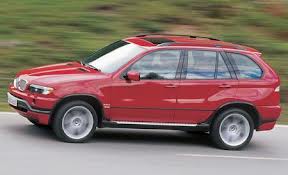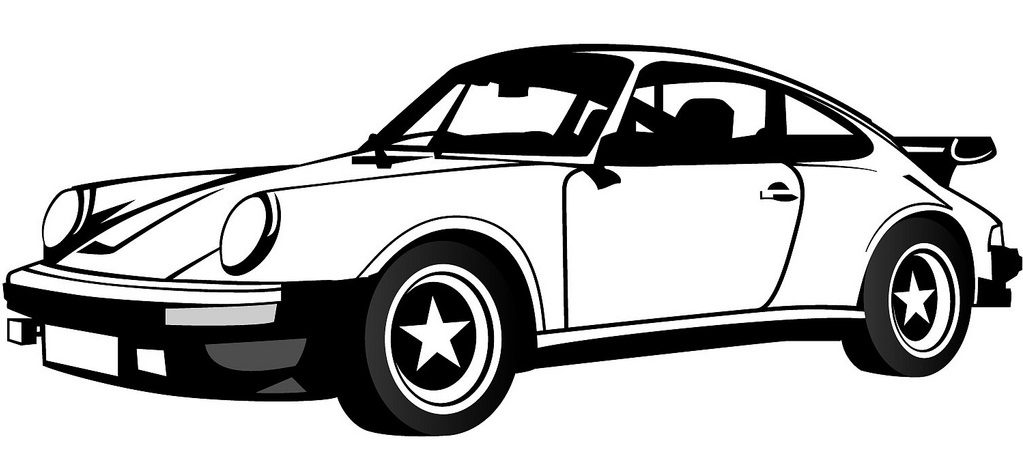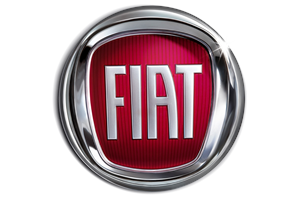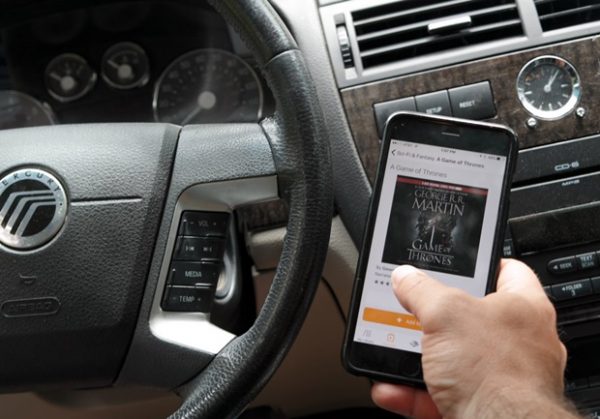A brief history of
Fiat
Introduction
The car manufacturer Fiat has made an important impact on the automotive world. In this article we will give a brief but detailed history of the Fiat marque.
We will look at the origins of Fiat looking at who, why, where and when Fiat was founded. We'll look at the design of the iconic Fiat logo and what are some the more significant Fiat models.
We'll take a glance at what racing history the Fiat has and who some of the most important people have been in the history of Fiat over the years.
Who, where, when and why was
Fiat founded?
FIAT, one of Italy's most prominent automobile manufacturers, was founded on July 11, 1899, by a group of investors led by Giovanni Agnelli. The company's formation took place in Turin, Italy, a city known for its industrial prowess and engineering excellence. The establishment of FIAT marked a significant moment in Italy's automotive history, as it became the country's first mass-production automobile manufacturer.
The founding of FIAT was driven by the vision of Giovanni Agnelli, a charismatic entrepreneur who recognized the potential of the burgeoning automotive industry. Agnelli saw an opportunity to bring affordable automobiles to the Italian market, which at the time was primarily dominated by imported vehicles. With a deep understanding of engineering and business, Agnelli assembled a team of investors and engineers to embark on the ambitious venture.
One of the key reasons behind FIAT's establishment was the increasing demand for automobiles in Italy. The late 19th century witnessed a growing fascination with the automobile, and Agnelli saw an opportunity to cater to a new breed of customers eager to embrace this innovative mode of transportation. By introducing mass production techniques and utilizing modern manufacturing processes, FIAT aimed to make automobiles more accessible to the wider population.
FIAT's choice of Turin as its headquarters was strategic. Turin had a well-established industrial infrastructure and a skilled workforce, making it an ideal location for automobile production. Additionally, the city was a hub of innovation and engineering expertise, attracting talented individuals who would contribute to FIAT's success.
FIAT's early years were marked by significant milestones and achievements. In 1900, the company produced its first car, the FIAT 3½ HP, which was followed by the success of subsequent models such as the FIAT 24 HP and the FIAT Zero. These early successes solidified FIAT's reputation for quality and reliability.
Over the years, FIAT expanded its product range to include various car models, commercial vehicles, and even agricultural machinery. The company's commitment to innovation and design excellence was exemplified by iconic models such as the FIAT 500, introduced in the 1950s, which became a symbol of Italian style and mobility.
Throughout its history, FIAT has faced numerous challenges, including economic downturns, changing market demands, and evolving industry regulations. However, the company has consistently demonstrated resilience and adaptability, responding to these challenges with new models and strategies.
In recent years, FIAT has undergone significant changes and transformations. In 2014, FIAT merged with Chrysler to form Fiat Chrysler Automobiles (FCA), a global automotive conglomerate. This strategic move expanded FIAT's reach and strengthened its position in the global market.
Today, FIAT continues to produce a diverse range of vehicles, including compact cars, SUVs, and electric vehicles. The brand's commitment to combining style, practicality, and performance remains evident in its lin-eup. FIAT's rich history, coupled with its ongoing commitment to innovation, ensures that the brand remains an influential player in the global automotive industry.
How did the
Fiat logo originate?

How did the Fiat logo originate?
In the 1970s, FIAT introduced another significant update to its logo, incorporating a more stylized and dynamic design. The emblem featured the FIAT name in bold, capitalized letters, with the letter "A" elongated and tilted, resembling an upward arrow. This logo design reflected the energy, progress, and innovation that defined FIAT's positioning during that era. The elongated "A" symbolized aspiration, forward movement, and a sense of optimism, highlighting FIAT's determination to push boundaries and embrace the future.
As FIAT continued to evolve, the logo underwent further refinements in the late 1990s and early 2000s. The focus shifted towards a more three-dimensional and metallic appearance, incorporating shading, gradients, and a sense of depth. This approach added a contemporary touch to the emblem, aligning it with the design trends of the time. The use of chrome and metallic accents in the logo reinforced the association with automotive excellence, while also emphasizing FIAT's commitment to quality and craftsmanship.
In recent years, FIAT embarked on a new era of brand identity and introduced a modernized logo. The latest emblem features a simplified design, with the FIAT name in a clean and sleek typeface. The letters are presented in lowercase, creating a friendly and approachable aesthetic. The absence of any accompanying emblem or symbol signifies a shift towards a minimalist and contemporary brand image. This updated logo reflects FIAT's focus on simplicity, elegance, and modernity, as well as its commitment to remaining at the forefront of design and innovation in the automotive industry.
The evolution of the FIAT logo reflects the brand's journey from its early days as a pioneering automaker to its position as a globally recognized and respected name in the automotive world. Each logo iteration represents a distinct era in FIAT's history, capturing the essence of the brand's identity, values, and aspirations. From the simplicity of the early designs to the dynamic and contemporary interpretations, the FIAT logo has played a significant role in shaping the brand's visual identity and symbolizing its commitment to innovation and progress.
What are some of the significant
Fiat models?
Throughout its history, FIAT has produced a range of significant models that have left an indelible mark on the automotive industry. From compact city cars to iconic classics and innovative designs, FIAT's lineup has catered to diverse customer needs and tastes.
One of FIAT's most influential models is the FIAT 500, introduced in 1957. The original FIAT 500, often referred to as the "Cinquecento," became an icon of Italian style and mobility. With its compact size, charming design, and affordable price, the FIAT 500 quickly captured the hearts of drivers looking for a practical and stylish urban vehicle. The FIAT 500's enduring popularity led to its relaunch in 2007, with a modern reinterpretation that retained the retro charm of the original while incorporating modern features and technology.
In the 1970s, FIAT introduced the FIAT X1/9, a two-seater sports car that combined sleek design with exhilarating performance. The X1/9 featured a mid-engine layout, providing exceptional handling and balance. Its removable roof panel offered an open-top driving experience, further enhancing the car's desirability. The FIAT X1/9 showcased FIAT's commitment to innovation and style in the sports car segment, becoming a cult classic among enthusiasts.
During the 1990s and early 2000s, FIAT produced the FIAT Punto, a compact hatchback that achieved significant commercial success. The Punto offered practicality, fuel efficiency, and a range of engine options, making it a popular choice for urban commuting and family use. Its versatile design and affordability appealed to a broad customer base, helping to establish the Punto as one of FIAT's best-selling models.
In recent years, FIAT has embraced electric mobility with models like the FIAT 500e. The FIAT 500e represents FIAT's commitment to sustainability and the future of transportation. It offers all-electric power, zero-emission driving, and a range suitable for urban commuting. The 500e retains the distinctive design and charm of its gasoline-powered predecessors while incorporating advanced electric technology.
Another notable model in FIAT's lineup is the FIAT Tipo, introduced in 2015. The Tipo is a family-oriented compact car that offers practicality, comfort, and value for money. With its spacious interior, efficient engines, and competitive pricing, the Tipo appeals to drivers seeking an affordable yet well-equipped option in the compact segment.
Furthermore, FIAT has ventured into the crossover SUV market with the introduction of the FIAT 500X. The 500X combines the iconic styling of the FIAT 500 with the versatility and ruggedness of an SUV. It offers a range of trims and engine options, allowing customers to tailor the vehicle to their preferences. The 500X exemplifies FIAT's adaptability to evolving market trends while maintaining its distinctive brand identity.
These models represent just a fraction of the significant vehicles that FIAT has produced over the years. Each model has contributed to the brand's success and legacy, reflecting FIAT's ability to innovate, adapt, and cater to the diverse needs and desires of customers worldwide. From the timeless appeal of the original FIAT 500 to the electrified future of the FIAT 500e, FIAT's lineup continues to evolve, setting new benchmarks in design, technology, and driving enjoyment.

One of Fiat's Most Iconic Models
Who are some of the most important people in
Fiat's History
Behind the success and legacy of FIAT, numerous individuals have played crucial roles in shaping the brand and its trajectory in the automotive industry. From visionary founders to talented engineers and designers, these individuals have left a lasting impact on FIAT's development, innovation, and reputation.
Giovanni Agnelli, the founder of FIAT, was a driving force behind the company's establishment and growth. Agnelli's entrepreneurial spirit, combined with his engineering acumen, guided FIAT's early years. His vision of making automobiles accessible to the wider population laid the foundation for FIAT's commitment to producing affordable and practical vehicles. Agnelli's leadership, dedication, and business savvy contributed to the company's expansion and established FIAT as a prominent name in the automotive industry.
Another significant figure in FIAT's history is Dante Giacosa, a renowned engineer and designer. Giacosa played a crucial role in developing some of FIAT's most iconic models, including the original FIAT 500 and the FIAT 128. His innovative designs, attention to detail, and focus on practicality helped shape the success of these vehicles. Giacosa's contributions to the automotive industry were recognized with various accolades, and his work continues to inspire generations of engineers and designers in the field.
Sergio Marchionne, the former CEO of FIAT Chrysler Automobiles (FCA), made a significant impact on the company's direction and strategy. Under Marchionne's leadership, FIAT underwent a transformation, merging with Chrysler and expanding its global presence. Marchionne's business acumen and ability to navigate challenging circumstances helped steer FIAT through a period of change and growth. His vision for creating a globally competitive automotive group and his commitment to innovation and sustainability left a lasting legacy.
Furthermore, the contributions of Lancia family members to FIAT's success cannot be overlooked. Vincenzo Lancia, the founder of Lancia Automobiles, joined forces with FIAT in the early 1900s, resulting in a fruitful collaboration. Lancia's engineering genius and passion for racing led to the development of groundbreaking technologies and successful racing cars. The Lancia family's involvement and expertise brought valuable knowledge and innovation to FIAT, contributing to the brand's reputation for performance and engineering excellence.
These individuals represent just a fraction of the significant people who have influenced FIAT's history. Countless engineers, designers, and executives have played pivotal roles in shaping the brand and its vehicles. Their dedication, creativity, and pursuit of excellence have been instrumental in establishing FIAT as an iconic name in the automotive industry.
From the visionary leadership of Giovanni Agnelli to the engineering brilliance of Dante Giacosa, and the strategic guidance of Sergio Marchionne, FIAT's most significant people have left an indelible mark on the brand's development and success. Their contributions continue to resonate through the innovative designs, engineering achievements, and the enduring legacy of FIAT.

One of the most influential people in the history of Fiat
Fiat's Racing History
FIAT has a long and storied history in motorsport, with its involvement spanning various racing disciplines and eras. The brand's racing endeavors have not only showcased its engineering prowess but have also played a significant role in shaping its reputation and driving technological advancements.
In the early years of FIAT, the brand ventured into racing as a means to showcase its engineering capabilities and establish itself as a serious competitor. FIAT cars participated in endurance races, road rallies, and hill climbs, earning recognition and accolades for their performance and reliability. Notable successes included victories in the Targa Florio, one of the most challenging road races of the time, solidifying FIAT's racing pedigree.
During the 1960s and 1970s, FIAT's racing involvement expanded as it entered various motorsport disciplines. In touring car racing, FIAT achieved remarkable success with models like the FIAT 124 Abarth Rally and the FIAT 131 Abarth. These lightweight and powerful machines dominated the rallying scene, securing multiple championship titles and cementing FIAT's reputation as a force to be reckoned with in motorsport.
One of the most significant chapters in FIAT's racing history came in the form of Formula One. In the late 1970s and early 1980s, FIAT became a major sponsor and engine supplier in the sport. Through its partnership with the Brabham team, FIAT-powered cars achieved notable victories, with Nelson Piquet clinching two World Championship titles in 1981 and 1983. FIAT's involvement in Formula One showcased its technical expertise and contributed to the advancement of engine technology in the sport.
FIAT's racing legacy continued in the following decades, with successes in touring car championships, rallycross, and even endurance racing. Notable achievements include victories in the World Touring Car Championship with the FIAT Bravo and multiple class wins in the grueling Dakar Rally with the FIAT Panda and FIAT Ducato.
In recent years, FIAT has focused on supporting and promoting customer racing programs. The brand has developed race-ready versions of its popular models, such as the FIAT 500 Abarth and the FIAT 124 Spider Abarth, allowing enthusiasts to participate in competitive racing series worldwide. These customer racing initiatives not only provide thrilling experiences for drivers but also serve as a platform for showcasing FIAT's performance capabilities and attracting new fans to the brand.
FIAT's racing heritage reflects the brand's commitment to pushing boundaries and pursuing excellence. The lessons learned on the track have often translated into advancements in road-going vehicles, with racing-inspired technologies and performance enhancements finding their way into production cars. FIAT's racing endeavors have not only shaped its image as a manufacturer of dynamic and engaging vehicles but have also contributed to the overall advancement of the automotive industry.
With a rich and diverse racing history spanning more than a century, FIAT's legacy in motorsport is a testament to its passion for competition, engineering prowess, and commitment to performance. Whether on the rally stage, the Formula One circuit, or the endurance tracks, FIAT has left an indelible mark on the world of racing and continues to uphold its racing heritage with pride.
Summary
FIAT, the renowned Italian car manufacturer, has a rich and storied history that spans over a century. Founded in 1899, FIAT has played a significant role in shaping the automotive industry with its commitment to innovation, design, and performance. From the iconic FIAT 500 to the sporty FIAT 124 Spider, the brand has produced a diverse range of vehicles that have captured the hearts of drivers worldwide.
With a strong emphasis on practicality and affordability, FIAT has become synonymous with stylish and accessible vehicles. The brand's heritage is rooted in delivering compact cars that excel in urban environments. However, FIAT has also ventured into other segments, including sports cars, SUVs, and electric vehicles, expanding its lineup to cater to a wider range of customer preferences.
Throughout its history, FIAT has faced challenges and undergone transformations, adapting to changing market trends and technological advancements. From the early years of producing reliable and affordable vehicles to its current focus on sustainability and electric mobility, FIAT has remained at the forefront of the automotive industry. Today, FIAT continues to uphold its reputation for blending style, practicality, and performance, captivating drivers with its distinct Italian flair.
View Fiat Car Specifications
More Manufacturer Histories.

























